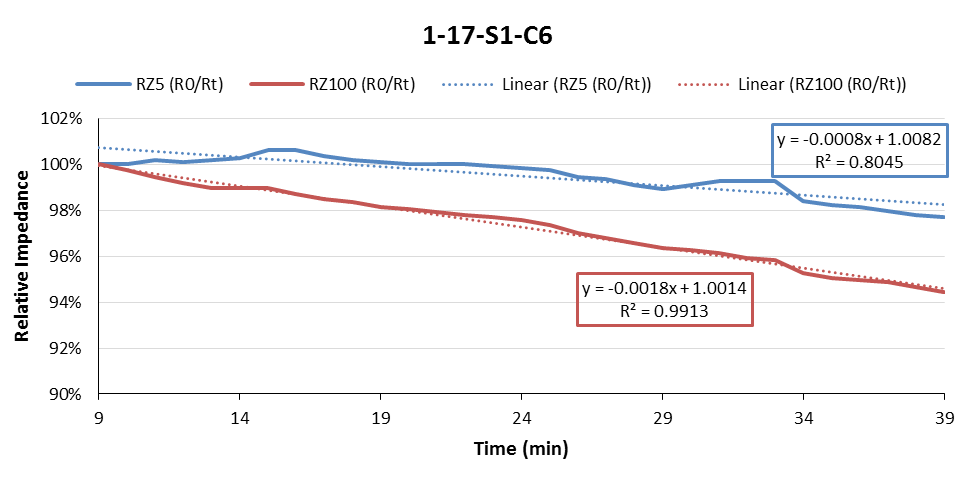Determining dry weight using multi-frequency bioimpedance
Accurately determining the dry weight1 of hemodialysis patients is a major challenge in the clinical treatment of the patient. A study was conducted with 40 patients to understand the benefit of Bioelectrical Impedance Analysis, or Bioimpedance2, which has been recognized as a noninvasive, simple technique to determine the dry weight in these patients.
During the study, each of the 40 patients underwent approximately eight dialysis sessions. All of the session data were collected and checked for quality issues, such as incorrect use of the bioimpedance device, the device not being turned off between sessions, etc.

Comparing the slope from the first 30 minutes of the session with the slope of the last 20 minutes of the session, the R 2 for all of the lines are very high, indicating a strong fit.
The Urban Science analysis was a first significant step in establishing an evidence-based process for determining the end point for dialysis sessions.
A strong relationship was found between the two frequencies used in the bioimpedance device at both the start and end of the hemodialysis treatment. This provides solid insight indicating an objective and repeatable process can be developed to determine patient dry weight using multi-frequency bioimpedance. The Urban Science analysis was a first significant step in establishing an evidence-based process for determining the end point for dialysis sessions.
- Dry weight is defined as the post-treatment weight at which the patient is close to normal hydration without experience symptoms indicative of over- of under-hydration, at or after the end of hemodialysis. In the clinical practice of hemodialysis, post-dialysis dry weight is estimated by trial and error.
- Bioimpedance measures the opposition to the flow of an electric current through the body fluids contained mainly in lean and fat tissue. Impedance is low in lean tissue, where intracellular fluid and electrolytes are primarily contained, but high in fat tissue. Impedance is thus proportional to body water volume.


